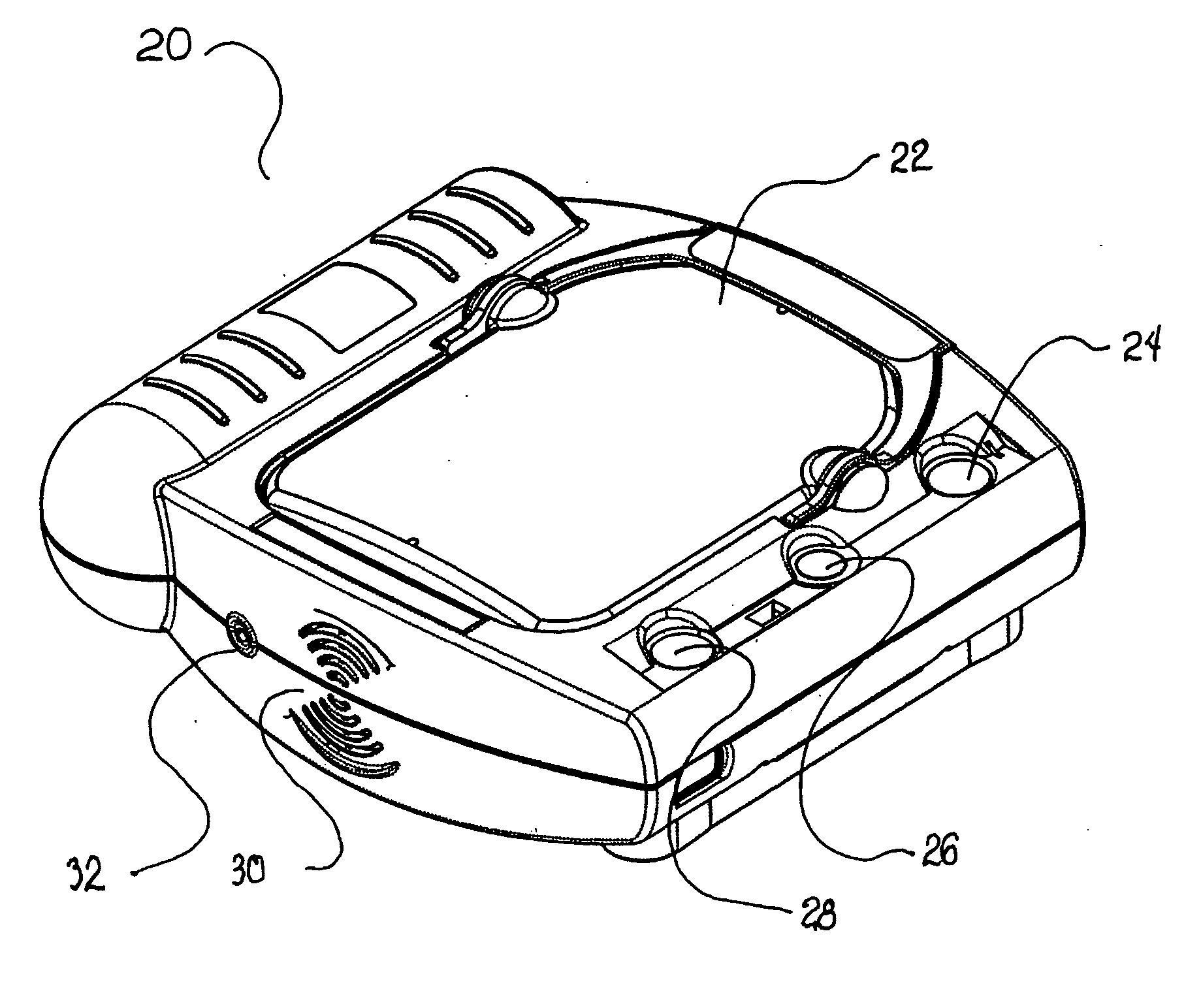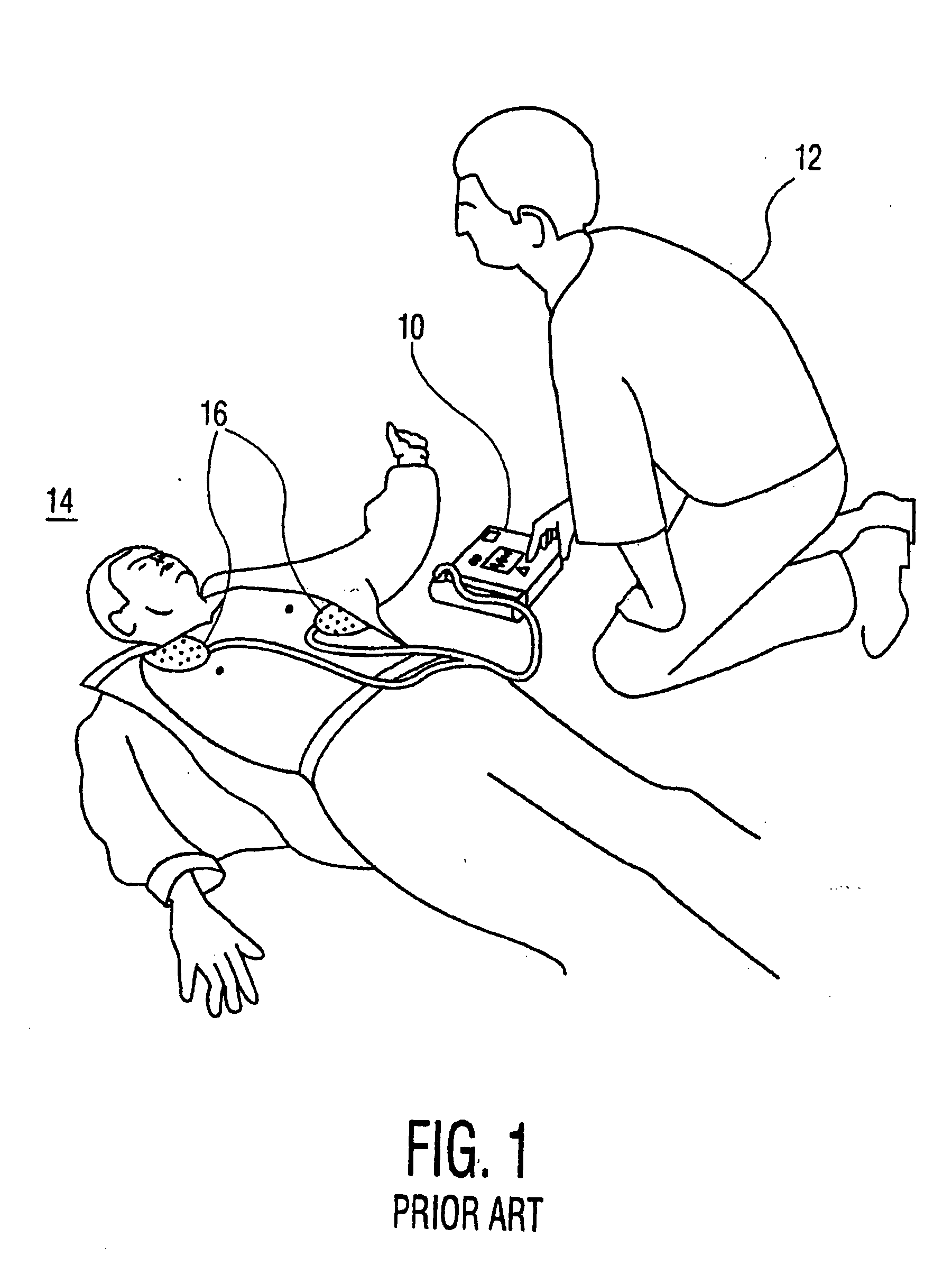Automated external defibrillator (AED) with context-sensitive help
- Summary
- Abstract
- Description
- Claims
- Application Information
AI Technical Summary
Benefits of technology
Problems solved by technology
Method used
Image
Examples
Embodiment Construction
[0017] The defibrillation of a SCA victim using an automatic external defibrillator of the prior art is illustrated in FIG. 1. The rescuer 12 begins the process by connecting an AED 10 to the victim 14 via a set of AED electrodes 16 which are attached to the victim as shown. The rescuer 12 activates the AED 10, which in turn analyzes the patient 14 cardiac parameters through the AED electrodes 16. If the cardiac parameters indicate that the victim is in ventricular fibrillation (VF), the AED 10 will prompt the rescuer 12 to remain clear of the patient and press the triangular shock button to initiate a patient shock through the electrodes 16. The cardiac parameters and prompts may be displayed visually on the AED screen as shown.
[0018] If the defibrillation shock is successful at restoring normal cardiac rhythm, the AED 10 will so indicate and will further prompt the rescuer 12 to perform other first aid actions. If the shock is unsuccessful, the AED 10 may repeat the cardiac analy...
PUM
 Login to View More
Login to View More Abstract
Description
Claims
Application Information
 Login to View More
Login to View More - R&D
- Intellectual Property
- Life Sciences
- Materials
- Tech Scout
- Unparalleled Data Quality
- Higher Quality Content
- 60% Fewer Hallucinations
Browse by: Latest US Patents, China's latest patents, Technical Efficacy Thesaurus, Application Domain, Technology Topic, Popular Technical Reports.
© 2025 PatSnap. All rights reserved.Legal|Privacy policy|Modern Slavery Act Transparency Statement|Sitemap|About US| Contact US: help@patsnap.com



